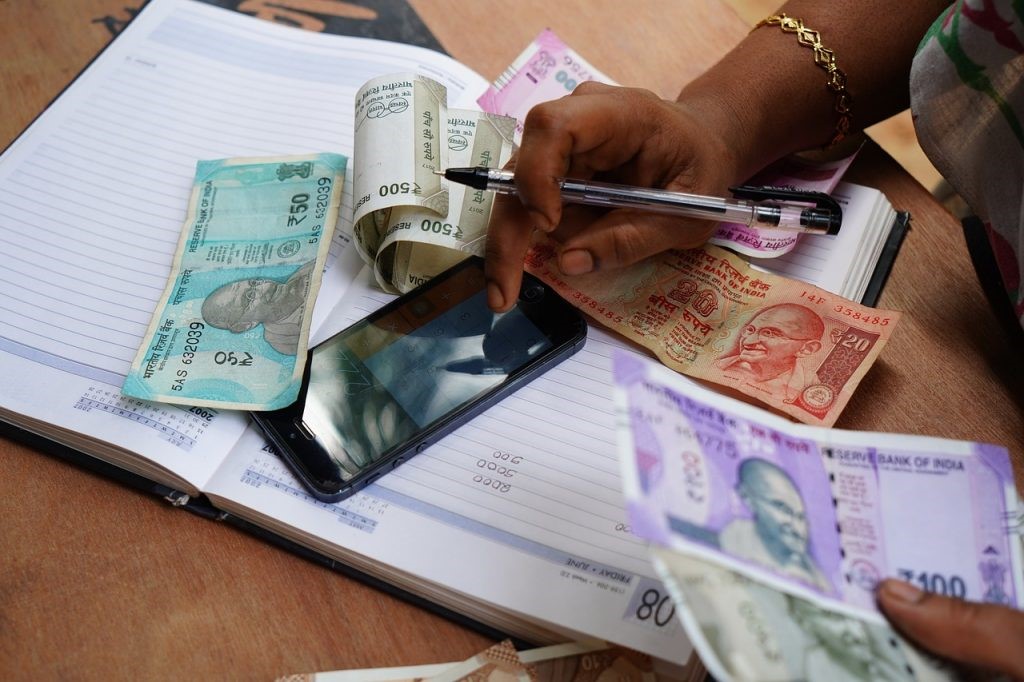Women over the last few decades have emerged from the four walls of their houses, started working and have become earning members of the family. There is since, a marked amelioration in their socio-economic conditions. Women constitute half of the world’s population and female participation is critical to boosting the economic potential of any nation.
Many women stay away from investing due to age-old inequalities, resulting in poor involvement in financial markets. According to the investment management company BlackRock, average female investors keep 68% of their portfolio in cash and cash equivalents, like money market accounts, treasury bills, and certificates of deposit.
Whereas, men keep 59% of their portfolios in cash, and women participation in stock investment is just 20%.
According to an IMF study, increasing women’s participation in financial services as users, providers, and regulators would have benefits beyond reducing gender imbalance. Closing the gender gap brings stability to the banking system while boosting economic growth. It could also help to implement monetary and fiscal policy more effectively

Covid, women and financial market participation
Indian women have been struck more severely by the pandemic than men. From lowering of wages to job losses and increased mortality, they have suffered disproportionately.
Data shows that their unemployment rate rose to 17%, more than double the rate for men during the pandemic. The ongoing series of lockdowns, anomalous salaries, pay cuts and job loss aggravates the need for women to look for alternate sources of income.
The lockdown has been an agonising period, however, it allowed women to utilise their time to find alternatives in maximising earnings. Rising gold prices, low returns on fixed deposits and real estate have moved savings from physical to financial assets.
More women have entered equity trading, by educating themselves through mock trading practices and video tutorials. The widening reach of the internet, work from home options, low initial investments and similar factors acted as great stimuli.
Women also tend to prefer lower financial risk compared to men. Fear, doubt and uncertainty prevent many from venturing into risks because women are also expected to “stay safe, within boundaries“. Women are conditioned to save in trustworthy chit funds, FD’s and POS rather than risking speculating and gambling which are considered masculine
According to an IMF study, increasing women’s participation in financial services as users, providers, and regulators would have benefits beyond reducing gender imbalance. Closing the gender gap brings stability to the banking system while boosting economic growth. It could also help to implement monetary and fiscal policy more effectively.
The gulf between men and women
Women are under-represented at many levels, and although they excel in all walks of life, they still struggle to reach the same levels in financial market participation.
The stock market remains male-dominated and women have a long way to go. 23% of women lack access to formal financial services, while 65% do not use financial services at all. They face barriers related to mobility, gender bias, and lack of financial and tech literacy.

Although India provides affordable, inclusive financial services, many women are unaware of them.
Recently, women started engaging in trading and investing, particularly in equity, with the benefits being financial independence and a flexible career. The returns earned and the risk taken is insignificant compared to men. Nonetheless, the technicalities, risk, volatility and fluctuating digits of the stock market tend to discourage many.
Why are women less involved?
Women do not advance in their participation in financial markets due to the lack of role models. Those entering the market may find it more difficult to traverse the path without enough women leading the way or peers to turn to for advice.
Women also tend to prefer lower financial risk compared to men. Fear, doubt and uncertainty prevent many from venturing into risks because women are also conditioned to “stay safe, within boundaries“. Women are conditioned to save in trustworthy chit funds, FD’s and POS rather than risking speculating and gambling which are considered masculine.

Women lack financial independence despite having income. Even if they are the breadwinners, their primary role as caregivers has not changed and remains a burden, depriving them of time to focus on stock trading and equity markets, especially in lower- and working-class households.
Also read: Why Do Women Hesitate Handling Finances?
There is also a direct relationship between the pay gap and investment gap. Women with the same experience and job as men make lesser money, hindering their financial investment capacities.
The pandemic: A period of growth in women’s participation
The period of lockdown has been significant for growth in the capital market and this trend was observed with respect to the involvement of women as well. In January 2021, the number of women who opened Demat accounts with the retail broking firm Sharekhan was 77% more than the number of accounts opened in the previous year.
Motilal Oswal Financial Service also observed a similar increase from 14.1% to 35.7% in women participation during January 2020-21.
Upstox, an online brokerage house, witnessed a 32% growth in account opening by women from April to June 2020 compared to the prior three months. Zerodha and True Beacon observed an additional 11 lakh clients since March 2020 out of which 1.8 lakh are women.

The overall online trade traffic of women was accounted to be between 15-20%. Moreover, it was observed that women were more interested to invest than to trade.
Several non-profits and other female-focused organisations are rising to the challenge. Girls Who Invest, an organisation created in 2015 by financial expert Seema Hingorani, has an aspirational goal of having women manage 30% of the world’s money by 2030.
Increasing participation and benefits
Women’s participation in equity markets has indeed increased during the pandemic. To maintain their standard of living and to save more in these uncertain times, women have turned towards stock market trading. Many are first-time investors, some housewives.
The outbreak of the pandemic and the uncertainties attached gave a fillip to women entering the fray. Investing in stocks and other financial market products encourage financial empowerment and thus, social empowerment.

Earlier, women used to be reluctant to invest and trade in the equity market but with internet connectivity and live access to market performances, financial market participation has increased. By learning about good investment decisions, creating portfolios and diversification of investments, women are taking control of finances with confidence.
Digital stock trading has provided various platforms for high-frequency trading with minimal risk and low brokerage charges. In the context of these factors, women are now equipped to take control of their finances with confidence.
Also read: Women’s Financial Autonomy Increases The Profitability Of Microfinance Institutions
This article is co-authored by Asha Mary Reji and Meera Mohan. Meera is a 3rd-year Integrated MSc Economics student interested in the field of finance, behavioural economics, labour economics and Indian classical dance and music. She may be found on Twitter and Instagram. Asha Mary Reji is a 1st year MSc Economics student with an interest in research. You may find her on Twitter and Instagram. Both are from Bengaluru Dr B R Ambedkar School of Economics University





Excellent views. ..
Well explained and nicely expressed.